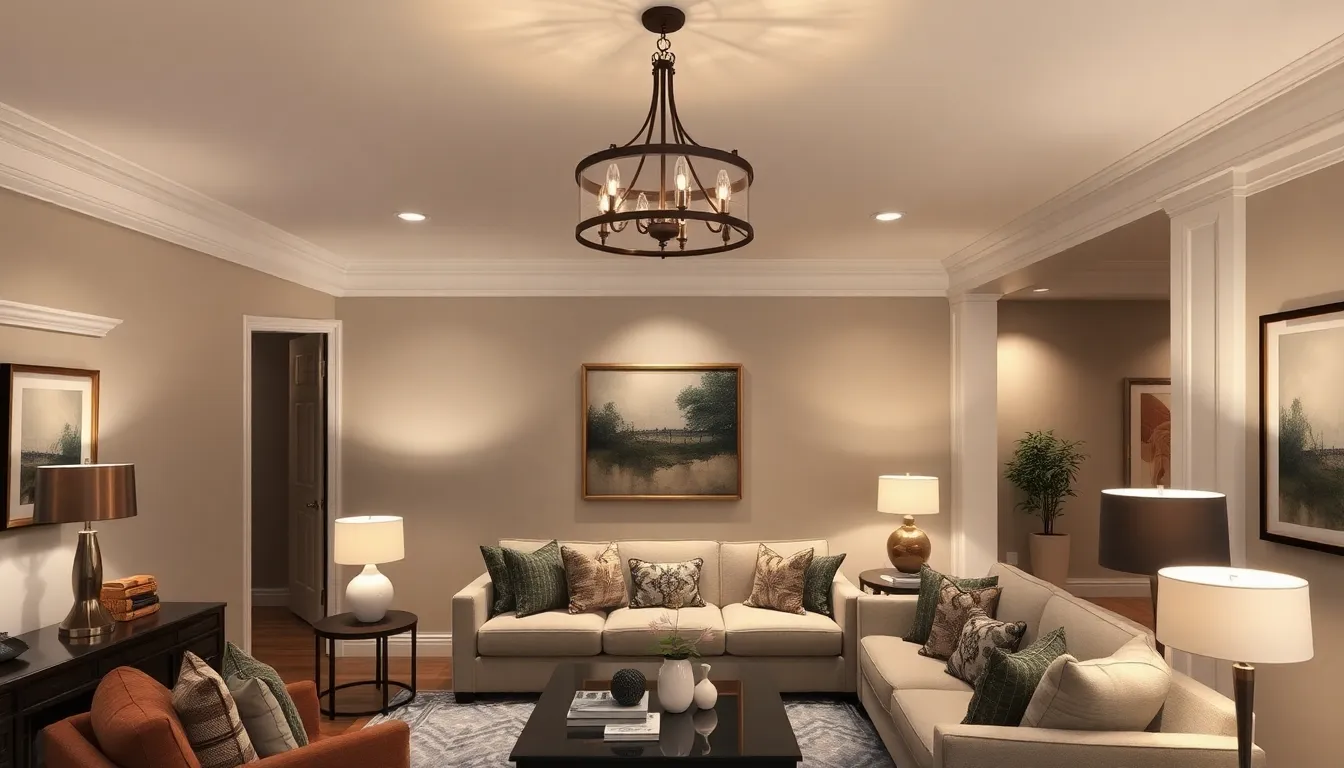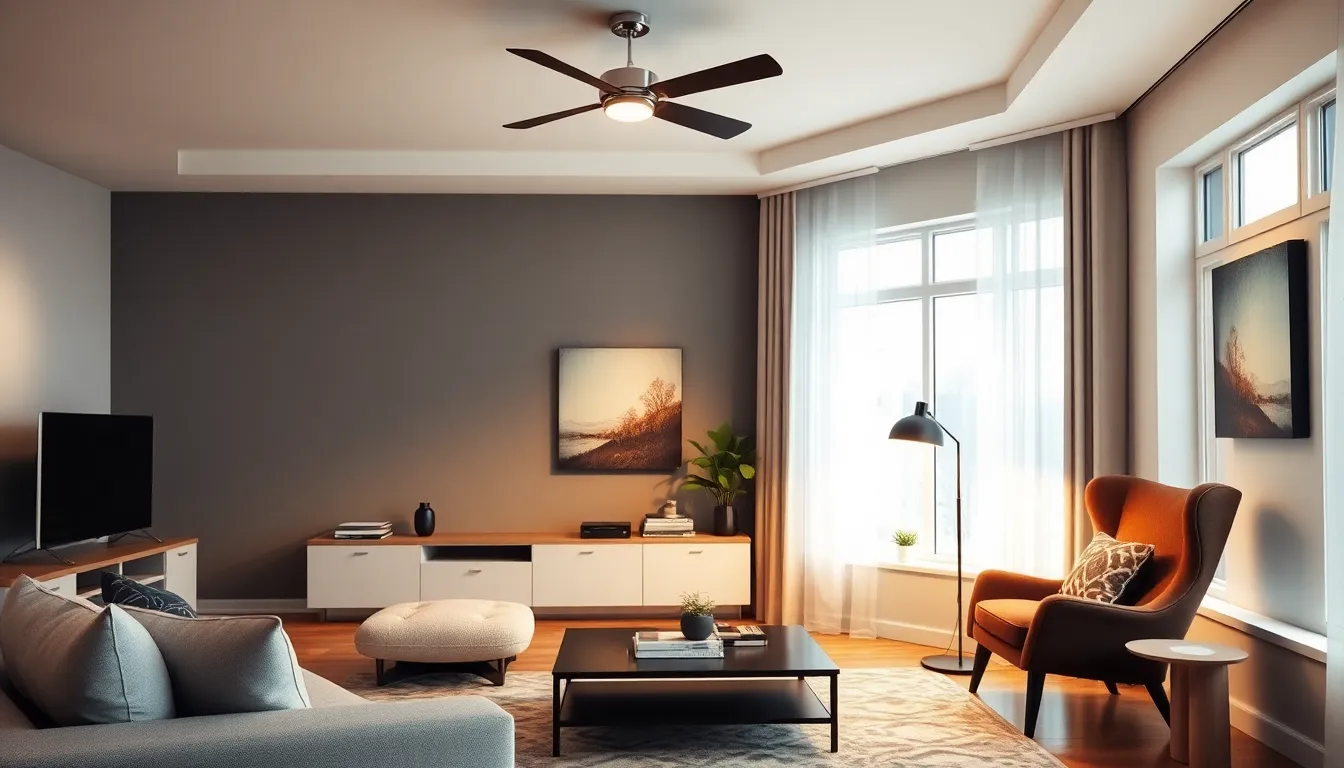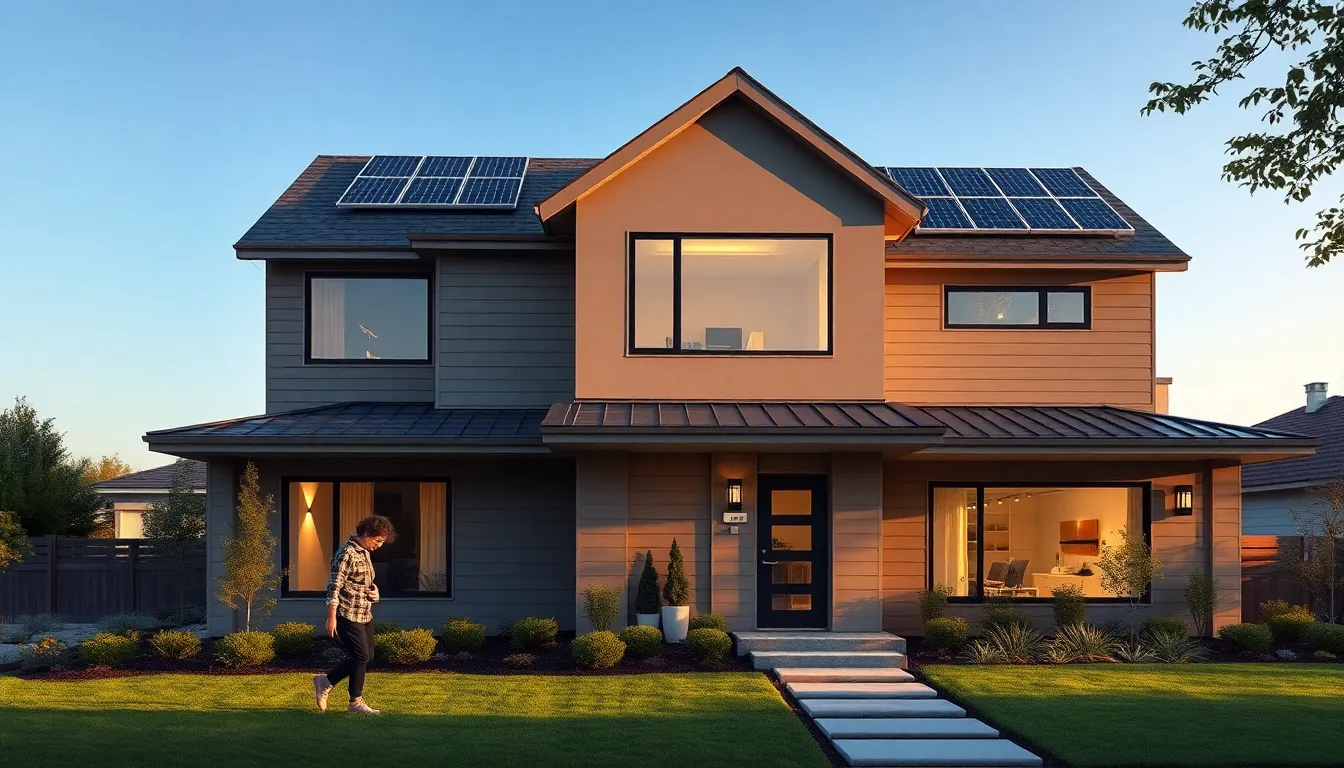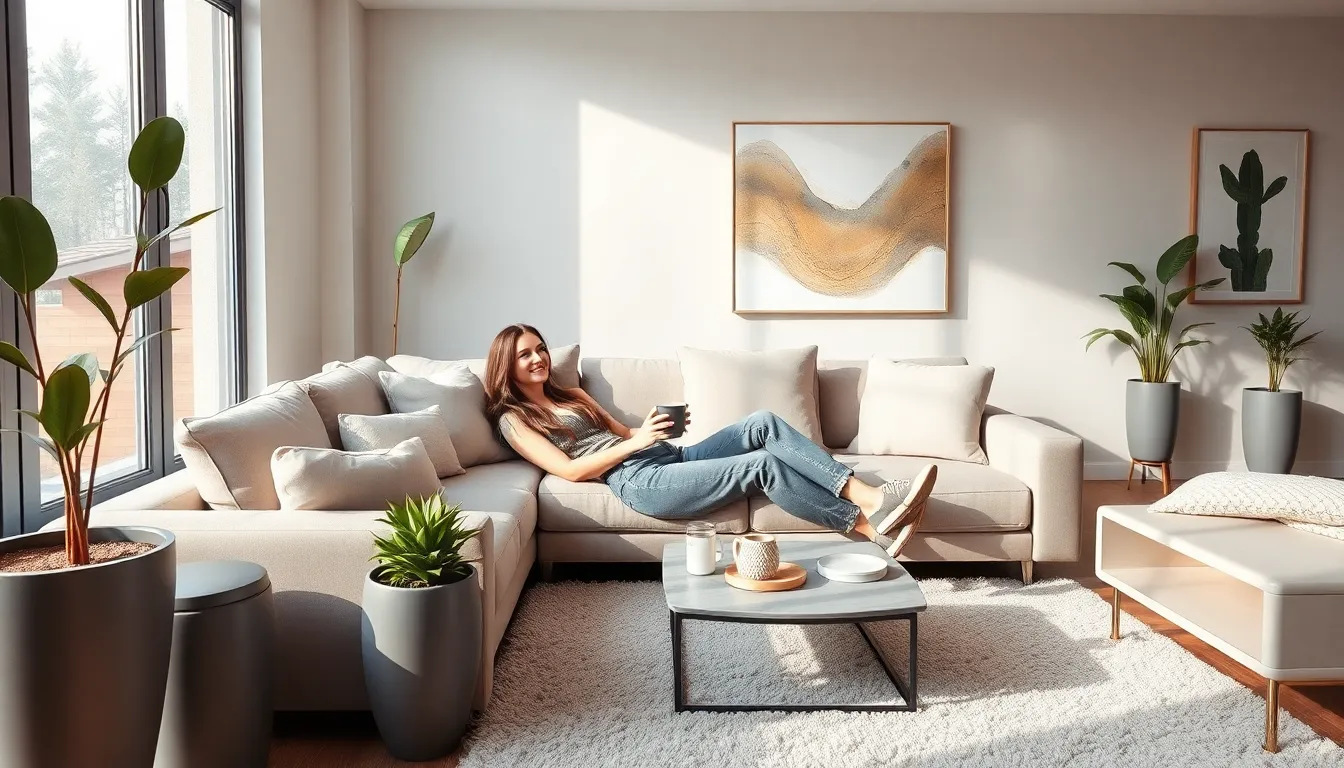Lighting plays a crucial role in shaping environments and influencing moods. From the soft glow of a bedside lamp to the vibrant illumination of a bustling city street, the right lighting can transform any space. It not only enhances aesthetics but also impacts functionality, making it essential for both residential and commercial settings.
Understanding the different types of lighting—ambient, task, and accent—can help individuals make informed choices that elevate their spaces. With advancements in technology, options like LED and smart lighting have revolutionized the way people think about illumination. This article delves into the importance of lighting, exploring its various forms and how to effectively use them to create the perfect atmosphere.
Table of Contents
ToggleWhat Is Lighting?
Lighting refers to the deliberate use of light to achieve a specific effect or enhance a space. It plays a crucial role in defining an environment’s character, improving functionality, and influencing people’s emotions.
Different types of lighting serve distinct purposes:
- Ambient Lighting: This general illumination establishes the overall brightness in a room. Fixtures like ceiling lights and chandeliers provide ambient lighting.
- Task Lighting: This focused lighting enhances visibility for specific activities, such as reading or cooking. Examples include desk lamps and under-cabinet lights in kitchens.
- Accent Lighting: This type of lighting highlights particular features or objects, such as artwork or architectural details. Track lights and wall sconces often serve as accent lighting.
Furthermore, technological advancements such as LED lighting and smart lighting systems have improved efficiency, versatility, and control over illumination. These innovations allow users to customize lighting to suit various situations and enhance energy savings. Understanding lighting is essential for creating well-designed spaces that evoke the desired atmosphere and improve usability.
Types of Lighting

Different types of lighting serve distinct purposes in both residential and commercial spaces. Understanding these categories helps create the ideal atmosphere while enhancing usability.
Ambient Lighting
Ambient lighting provides overall illumination in a room. It establishes the basic level of lighting, allowing individuals to navigate and interact comfortably within the space. Common sources include overhead fixtures, ceiling-mounted lights, and wall sconces. Designers often choose soft, diffused light to create a welcoming environment. Dimmer switches can control brightness levels, offering flexibility for various activities or moods.
Task Lighting
Task lighting focuses on specific tasks, enhancing visibility for activities such as reading, cooking, or studying. This type of lighting typically features brighter illumination directed at functional areas. Examples include desk lamps, under-cabinet lighting, and pendant lights over workspaces. By increasing productivity and reducing eye strain, task lighting becomes essential in both home offices and kitchens.
Accent Lighting
Accent lighting highlights specific features or decor elements in a space. This type creates visual interest by drawing attention to artworks, architectural details, or plants. Common forms include spotlights, track lighting, and decorative fixtures. Accent lighting adds dimension and depth to a room, enhancing the overall aesthetic appeal. Proper placement and intensity can transform ordinary spaces into visually striking environments.
Importance of Lighting
Lighting significantly influences the mood, atmosphere, functionality, and safety of any space. Its strategic use transforms environments, making informed lighting choices essential.
Mood and Atmosphere
Lighting directly affects emotional responses. It sets a calming atmosphere in residential spaces through soft, warm lighting, ideal for relaxation. In contrast, bright, cool lighting boosts energy levels in collaborative workspaces. Adjusting lighting intensity and color temperature creates varied moods, allowing environments to cater to specific activities or events. Lighting also enhances decor elements, emphasizing colors and textures to create visually appealing designs.
Functionality and Safety
Functional lighting enhances safety and usability in spaces. Sufficient illumination prevents accidents by providing clarity in pathways and work areas, crucial for homes and workplaces. Task-oriented lighting improves focus during activities like cooking or reading. Well-placed fixtures can eliminate shadows, promoting efficiency. Smart lighting solutions, including motion sensors, contribute to safety and energy conservation by ensuring lights activate only when needed.
Choosing the Right Lighting
Selecting appropriate lighting involves understanding specific requirements for various environments. Prioritizing both functionality and aesthetics helps create balanced spaces.
Considerations for Different Spaces
- Living Rooms: Use ambient lighting to set a welcoming tone. Layering with task lighting provides functionality for reading or hobbies. Accent lighting showcases artwork or architectural features.
- Kitchens: Implement bright task lighting for work areas like countertops and stoves. Use adjustable lighting for versatile cooking scenarios. Ambient lighting ensures an inviting atmosphere during social gatherings.
- Bedrooms: Opt for soft, warm lighting to foster relaxation. Incorporate task lighting near beds for nighttime reading. Utilize accent lighting to highlight decor elements or create a calming aura.
- Bathrooms: Choose bright, focused lighting for grooming tasks. Layer ambient lighting for general illumination. Consider motion sensors for convenience and energy savings.
- Offices: Prioritize bright task lighting to enhance productivity. Use adjustable lighting to minimize glare on screens. Consider ambient lighting to create a comfortable working environment.
Energy Efficiency and Sustainability
- LED Technology: Utilize LED bulbs, which consume up to 80% less energy than traditional incandescent options. LEDs have longer lifespans, reducing waste.
- Smart Lighting Solutions: Implement smart lighting systems to schedule and control lighting remotely. These systems can adapt based on occupancy or time of day, promoting energy savings.
- Natural Light Utilization: Design spaces to maximize natural light access, which reduces reliance on artificial illumination. Strategically placed windows and skylights enhance brightness while conserving energy.
- Light Control Systems: Use dimmers and timers to adjust lighting levels based on activity. These tools support energy conservation and help maintain the ideal ambiance.
- Sustainable Materials: Choose fixtures made from recycled or sustainably sourced materials to reduce environmental impact. Energy-efficient designs contribute to a greener footprint.
Lighting is more than just a functional necessity; it’s a vital element that shapes experiences and environments. By understanding the different types of lighting and their effects on mood and usability, individuals can create spaces that are both aesthetically pleasing and practical.
Embracing modern technologies like LED and smart lighting not only enhances efficiency but also offers greater control over ambiance. As people continue to prioritize sustainability, choosing eco-friendly lighting solutions becomes increasingly important.
Ultimately, thoughtful lighting decisions can transform any space into a harmonious blend of comfort and style, making it essential for anyone looking to elevate their environment.



